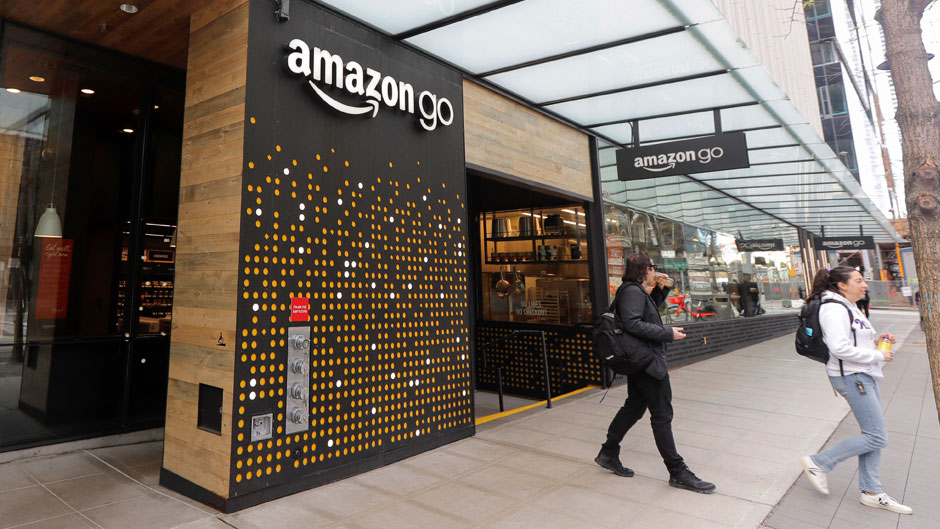In late August, the e-commerce behemoth Amazon purchased two retail stores, one in Ohio and one in California, where it plans to market its own products—clothes, furniture, batteries, electronic goods, and more—and expand its dominion of the commerce industry.
“From a business standpoint, it makes perfect sense,” said Sara Rushinek, professor of business technology at the University of Miami Patti and Allan Herbert Business School. “Amazon is doing what any business wants to do—increase revenues, decrease costs, and get closer to engaging their customers.”
She added that it is “a brilliant idea to start small and target the Midwest in particular,” noting the region is headquarters home to Amazon’s’ competitors such as Walmart, Kohl’s, and Macy’s—stores that have managed to survive and rebound from the pandemic.
Amazon will command an advantage in terms of retail with their knowledge of customers and their planned smaller stores—at 30,000 square feet the size will be more efficient in terms of scale and managing inventory.
“Why has retail failed so badly? Because these stores weren’t run well—they’re large spaces and inventory is always a problem because they had to order way in advance, not knowing what consumers really want,” Rushinek pointed out. “Then COVID happened, and nobody came—people wanted loungewear, and nobody needed those business outfits.”
Since Amazon launched in 2005, the company has revolutionized the sales industry and dominated online sales in recent years. There are 147 million Amazon Prime members in the United States alone. Yet the industry shows signs of bottlenecking and requiring adjustments.
A recent article on Amazon and e-commerce development in Atlantic Monthly documented some of the problem areas that have emerged. Returns from online purchases increased by 70 percent in 2020 with high associated costs for sellers and consumers, consumer waste from packaging contributes a large portion to landfills, and last-mile freight—for which some couriers must use their own vehicles—incur delays and cause environmental impact, among others.
“Everything has its limitations, and there is some learning coming back now for people to integrate,” said Rushinek, adding that Amazon will likely use the brick-and-mortar stores to hone their new technologies.
Among the limitations and lessons learned, Rushinek referenced “touch-and-feel” products—clothes, shoes, even sofas—that literally don’t fit in the e-commerce purchasing chain.
“I want to feel the quality of the fabric, I want to see how those shoes fit, what’s a wide, a medium? And maybe it’s the right size, but it just doesn’t feel right,” she noted, while highlighting that the practice of buying multiple items of different sizes online—and then returning those that don’t fit—results in pricing inefficiencies that get passed back to customer and seller.
And yet while Amazon has become the undisputed giant of e-commerce, she said that the real wealth now for the company is in their Amazon Web Services (AWS) subsidiary, which provides new technologies that are driving commerce—even for their competitors.
“What did they do? They knew how to do e-commerce and they started selling that service to their competitors,” she said. “They’ve become very profitable on creating that e-commerce back end and become very profitable doing data analytics because they have all the data about you.”
While she recognized caveats to the massive data collection, Rushinek noted that the positive side is that Amazon can better satisfy their customers’ needs.
“Data is king, and that genie is out of the box,” she said. “The positive side for the consumer is that they know more of my sizing, my lifestyle, my wants and likes.”
A longtime advocate for a hybrid approach to commerce that combines tech use with in-person sales, Rushinek said the area is ripe for Amazon to exploit.
“There’s so much they can do and are beginning to do already using virtual reality and augmented reality,” she said. “With electronic goods, for example, oftentimes a consumer wants to try out certain products or has questions that an expert monitor online could be available to answer using these new technologies.”
The move back into brick-and-mortar stores is part of a longer-term strategy for the company, she suggested.
“Down the road, it may be more of the AWS brick-and-mortar technologies that they’ll be developing that they will be selling to Kohl’s and other companies,” Rushinek suggested. “That makes sense. Some of this may not succeed, but they’ll see where it goes, and that’s why they’re starting off with two stores.”

